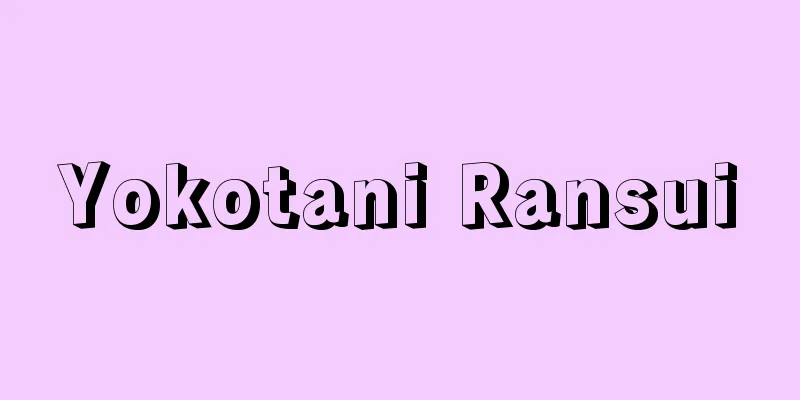Niraikanai - I can't stand it

|
The world of gods beyond the sea, as told in the Ryukyu Islands. In the Omoro Sōshi (compiled 1531-1623), it is called Niryakanaya, and in the Ryukyu Shintōki (1603-06) by Sobokuchū, it is called Giraikanai. In the Okinawa Islands, it is pronounced as Jirekane, and in kanji, it is called Giraikawachi. In the Amami Islands, it is called Neriya, and in the Miyako Islands and Yaeyama Islands, it is called Neera. Kanai is a synonymous antonym of Nirai, and Niraikanai is a compound word formed by combining these two. Originally, Nirai meant a faraway place, and it became associated with the idea of a foreign land, and in the belief in gods, it became specialized to refer to the world of gods. Even today, there are villages where everyday usage unrelated to the belief in gods remains. In the Okinawa Islands, Niraikanai is often located in the eastern sea, linked to the belief that the world of gods is in the east (slightly east of the southeast). At Ishikidomari on the southeast coast of Kudaka Island in Chinen Village, there is a place of worship called Futaomae, where people worship the east, and it is called Girai Oonushi and Kanai Matsukasa. Oonushi and Shinji mean chief gods, and refer to the chief gods of Niraikanai. The Shuri Royal Court glossary Konkokenshu (1711) states that "Niruyakana-ya no Okami" is "Agarui no Oinushi" (Great Lord of the East). In the Omoro Sōshi, "Agarui no O-nushi" is the sun god, and in the Okinawa Islands, Niraikanai, the world of gods with the sun god as its chief deity, is imagined to be located in the direction of the rising sun. It is a world beyond the horizon, and is often translated as Ryugu. There is also a legend that fire and rice were also brought from Niraikanai. The god of Niraikanai is the chief deity of Ryukyu Shinto, and was called Kinmamun (Kimimamono) in ancient times, and its local Buddha was said to be Benzaiten. There is also a belief that fertility is brought from Niraikanai, and on Taketomi Island in the Yaeyama Islands, on August 8th of the lunar calendar, there is a Shinto ceremony called Yunkai (Yo-mukae), held at the Niran Stone on the west coast to welcome the god of Niran, who comes from the country of Niran and brings a bountiful harvest on a ship. The opposite of Niraikanai is Obotsukagura. In the Amami Islands and Okinawa Islands, the sacred ground where the gods brought from Nirai are enshrined is called Mount Obotsu. Obotsukagura would be the real world of the gods. The "ni" in Nirai is said to correspond to the "root" in the ancient Japanese word "ne no kuni." Ne no kuni is also a word that refers to a distant other world, and the usage is the same. Niirasuku, which is thought to be synonymous with Niraikanai, and Niruyasoko in "Omoro Sōshi" are word forms that evoke the ancient Japanese word "ne kuni shita kuni." [Yo Kojima] Source: Shogakukan Encyclopedia Nipponica About Encyclopedia Nipponica Information | Legend |
|
琉球(りゅうきゅう)諸島で伝える海のかなたにある神の世界。『おもろさうし』(1531~1623編纂(へんさん))にはニルヤカナヤとあり、僧袋中(たいちゅう)の『琉球神道記(しんとうき)』(1603~06)にはギライカナイとみえる。沖縄諸島ではジレーカネーなどと発音し、漢字では「儀来河内」とも書く。奄美(あまみ)諸島ではネリヤ、宮古列島や八重山(やえやま)列島ではニーラなどともいう。カナイはニライの同義的対語で、それらが畳語的に複合したのがニライカナイである。本来、ニライとは、はるかな遠い所という意味の語で、それが異郷観と結び付き、神信仰のなかでは、特殊化して神の世界をさすようになった。今日でも、神信仰と無関係な日常的用例の残っている村もある。沖縄諸島では、東方(南東よりやや東寄り)に神の世界があるという信仰と結び付き、ニライカナイも東方の海上になっていることが多い。知念(ちねん)村久高(くだか)島の南東海岸の伊敷泊(いしきどまり)には、東方を拝む拝所二御前(ふたおまえ)があり、ギライ大主(おおぬし)、カナイ真司(まつかさ)とよばれている。大主、真司は主神という意味で、ニライカナイの主神のことである。首里(しゅり)王府の用語辞典『混効験集(こんこうけんしゅう)』(1711)には、「にるやかなやの大神」が「あがるいの大ぬし」(東方の大主)である、とある。『おもろさうし』では「あがるいの大ぬし」は太陽の神で、沖縄諸島では、太陽の昇る方角に、太陽の神を主神とする神の世界、ニライカナイを想定していた。水平線のかなたの世界で、竜宮と訳されることも多い。火や稲もニライカナイから将来されたとする伝えもある。ニライカナイの神が琉球神道(しんとう)の主神で、古くはキンマムン(君真物(きみまもの))とよばれ、本地仏は弁才天であるとされた。豊穣(ほうじょう)がニライカナイからもたらされるという信仰もあり、八重山列島の竹富島では、旧暦8月8日に、ユーンカイ(世迎え)といって、西海岸のニーラン石の所で、ニーランの国から船に五穀豊穣を積んでくるニーランの神を迎える神事がある。 ニライカナイの対語にオボツカグラがある。奄美諸島や沖縄諸島では、ニライから迎えた神を祀(まつ)る聖地をオボツ山と称している。現実の神の世界がオボツカグラであろう。ニライのニは日本の上代語の「根の国」の「根」に相当するといわれる。根の国も遠い別世界をさす語で、用法も共通している。ニライカナイと同義と思われるニーラスクや『おもろさうし』のニルヤソコは、上代語の「根国底国」を思わせる語形である。 [小島瓔] 出典 小学館 日本大百科全書(ニッポニカ)日本大百科全書(ニッポニカ)について 情報 | 凡例 |
<<: Neelakanta Shastri (English spelling)
>>: Chinese chive (Allium tuberosum) - Chinese chive (Allium tuberosum)
Recommend
Parvin E'tesāmī
1906‐41 A contemporary Iranian female poet. Born i...
Unryu paper
Paper made with long fibers of hand-torn kozo (pap...
Tuscarora
...the Iroquois were Indians who lived in the for...
Guo Ruosi - Peacock
…An astronomer, mathematician, and hydraulic engi...
Mesosphere (English spelling)
The atmospheric layer above the stratosphere and b...
Shishiudo - Shishiudo
A large perennial plant of the Umbelliferae famil...
Brotherly love
…The word yuai can mean friendship in the narrow ...
Gulliver-type oligopoly - Gulliver is the winner
The term "oligopoly" refers to a situati...
Peperomia caperata (English spelling) Peperomia caperata
… [Takabayashi Masatoshi]. … *Some of the termino...
Rice spoon - Iigai
〘 noun 〙 A tool for transferring rice to a dish an...
Latitude Argument - Idoinsu
...In this case, if two nights of observations ar...
My home paradise
An American film produced in 1938. Original title:...
Red maple (English spelling)
…(4) Red maple A. pycnanthum K. Koch (illustratio...
Bell Harry
…English master craftsman William took over and c...
Ando Yoshu
…As a scholar, Nakae Toju, the father of Japanese...









